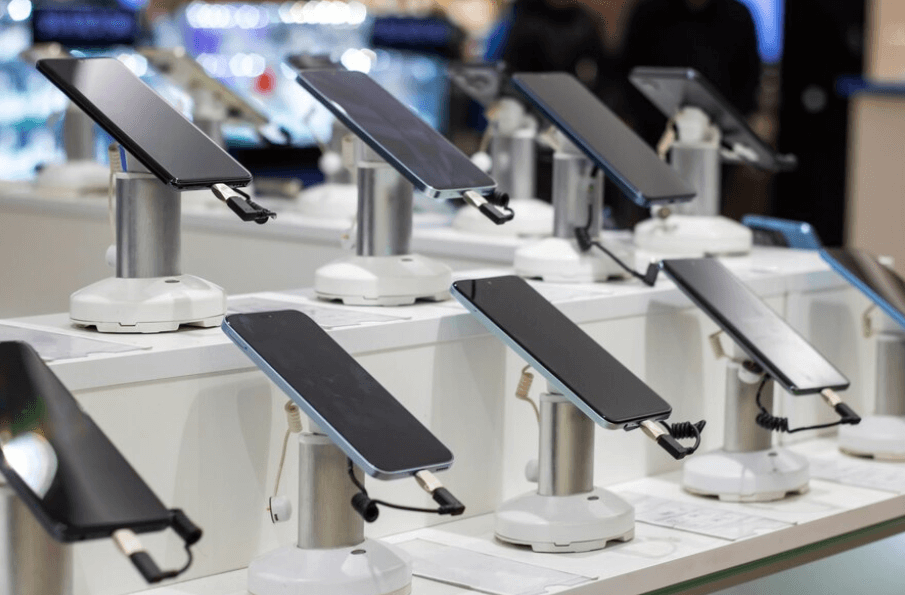What to Sell Online in the Philippines: Online Selling Ideas and Market Insights
Key takeaways:
- eCommerce in the Philippines is a flourishing niche worth trying
- The best online selling ideas in the Philippines include fashion, electronics, toys, and beauty items
- The initial costs might vary depending on the business model and can be covered with Digido loans
Table of Contents

The eCommerce market of the Philippines is forecasted to reach approximately 60 billion USD in 2030 which is supposed to be a significant growth compared to its 15 bln USD value in 2022 (1). Such a competitive landscape makes creating a new online business a risky enterprise, but has all chances to pay off.
To make the risky part less scary, we conducted research that will give you a basic understanding of eCommerce business in the Philippines and share the actual ideas on what exactly you can sell to succeed.
- Only 1 Valid ID needed to apply
- No proof of income is required
- Fast online approval in 5 minutes

Advantages of Online Selling Business in the Philippines
We’ve already mentioned that the market is big. Therefore, you will have to work in a tough competition. To succees in your business and beat competitors, you should select wisely what to sell online in the Philippines. We prepared some points that might persuade you more if you were still doubting.
- High Social Media Penetration: With over 89 million active social media users, platforms like Facebook, Instagram, and TikTok are smoothly integrated into the Filipino lifestyle. This fact implies you have a powerful selling tool and marketing platform for your future business.
- Tech-Savvy Users: The Philippines population can boast a young demographic with a median age of around 25 years. This group willingly adopts new technologies, and the number of online shopping users is expected to grow to 31.6 million individuals by 2029 (2).
- Cross-Border Selling Opportunities: The Philippines has relatively relaxed regulations for cross-border selling, which allows local businesses to sell internationally and foreign brands to enter the local market without severe efforts.
- Developed Logistics Infrastructure: The country, especially its urban areas, has a well-developed logistics infrastructure. Multiple courier services that ensure swift delivery by bikes, motorbikes, and cars, can create a significant support to online eCommerce businesses in the Philippines.

4 Best Online Selling Ideas in the Philippines
Of course, there are plenty of products you can sell online in the Philippines. The list can involve hundreds, or even thousands of single items, and dozens of product niches that can become popular enough to bring a stable income.
However, we decided to base this guide on the bare statistics. We checked the latest research and found out the top popular niches from the number of users point of view (3).
Here is what we got.
Idea 1: Electronics
The electronics market in the Philippines is very dynamic and evolving. It offers plenty of opportunities for online businesses of any scale: from a small online Apple shop to a big electronics marketplace.
Obviously, like any sector, this one comes with its own set of advantages and challenges.
| Advantages | Disadvantages |
|---|---|
| Wide Range. The electronics market caters to various needs, from entertainment to work and thus remains in demand among a diverse customer base. | Technical Issues. Electronics are prone to technical malfunctions. This can lead to high enough return rates and customer complaints. |
| Regular stock updates. Continuous digital innovation means new products regularly, keeping the market fresh. | Price Fluctuations: Prices on gadgets can be volatile due to changes in technology, market demand, overall economical state. This all might affect profitability in the end. |
What to Sell?
Based on current trends and market demand, we prepared the list of the top popular electronic items in the Philippines for 2024:
- Smartphones and Accessories: Always in demand; can be called a staple of the electronics market.
- Laptops and Tablets: Essential for work and education, also generate big sales, especially during the school season.
- Wearables: Items like smartwatches and fitness trackers are becoming increasingly popular worldwide as well as in the Philippines.
- Gaming Consoles and Accessories: With the rise of eSports and online gaming, related electronics are a hit.
- Audio Equipment: From Bluetooth speakers to headphones, high-quality audio devices are sought after.

Average Prices to Start:
The cost of starting an electronics business can vary, of course. To get some precise figures, let’s suppose you decided to sell smartphones. In this case, your expenses might be the following:
- 20 units at Php 5,000 (entry-level smartphones): Php 100,000
- 20 units at Php 30,000 (mid-range smartphones): Php 600,000
Total for Initial Stock: Php 700,000
Idea 2: Clothing
Clothing remains the second biggest demand for the Filipinos, and that’s overall an evergreen business: people require clothes no matter the season, right? Besides, locals are inclined to be pretty interested in the international and local fashion trends, which is another marketing hint.
Here are some specific advantages and challenges on the e-commerce landscape in the Philippines.
| Advantages | Disadvantages |
|---|---|
| Cultural Diversity The Philippines’ cultural diversity offers a rich palette for fashion, allowing for a wide range of styles and trends | Size and Fit Concerns: Online shoppers often worry about the fit and size of clothing, which can lead to high return rates |
| Youthful Market: A significant portion of the population is young, tech-savvy, and fashion-conscious, driving demand for trendy apparel | Copycat Products: The prevalence of counterfeit and copycat products can undermine the value of original designs and brands |
What to Sell?
For 2024, the following fashion items are trending in the Philippines (3):
- Elevated Basics: Minimalist classical clothing for everyday life.
- Accessories: Belts, eye-catching buckles, and mixed-material bracelets
- Denim: All sports of jeans, and especially Barrel-Leg shapes — the impact of the European trends
- Maxi Skirts: Fluid maxi skirts with tiered and ruched details
- Athleisure: Comfortable and stylish sports clothes adapted for everyday life

Average Prices to Start:
Starting a fashion business online involves various costs. For instance, if you’re considering selling a mix of basic and statement pieces, you might invest in:
- 20 basic tops at Php 50: Php 1,000
- 20 statement belts at Php 100: Php 2,000
Total for Initial Stock: Php 3,000
Idea 3: Beauty and Personal Care
The beauty and personal care industry in the Philippines is not just growing; it’s booming (4). With a culture that values beauty and self-care so much, online entrepreneurs have a significant opportunity to burst into the market and shine out.
Here’s a brief overview of this business idea:
| Advantages | Disadvantages |
|---|---|
| Cultural Alignment. Beauty and personal care align with the Filipino value of “pagpapaganda,” making these products always in demand | Competition. The market is pretty crowded with local and international brands, which creates harsh competition. |
| Influencer Impact. Local celebrities and beauty bloggers can significantly drive sales and boost brand brand awareness within the Filipino audience | Regulatory Hurdles. The regulatory environment for cosmetics can be daunting. For example, there are strict enough requirements for product registration and compliance. |
What to sell?
An online beauty and personal care store must offer a convenient shopping experience, providing customers with a wide range of products from skincare to makeup, all at their fingertips. Here is what you can include in stock in 2024:
- Skincare: Products like moisturizers, serums, and especially sunscreens. The leading ingredients are niacinamide and hyaluronic acid.
- Makeup: The most demanded items might include long-wear foundations, basic eyeshadows, and nourishing lip products.
- Hair Care: Shampoos, conditioners, and styling treatments specifically tailored to the tropical climate.

Average Prices to Start:
Here’s a breakdown of a price based on a pretty specific example. The actual costs will depend on the items you purchase and the volumes you are going to begin with.
Basic Skincare Sets: If we consider skincare sets that range from Php 300 to Php 5,000, you might decide to purchase:
- 20 sets at Php 300: Php 6,000
- 20 sets at Php 5,000: Php 100,000
Makeup Items: For makeup items like lipsticks and foundations, which can range from Php 200 to Php 2,000, your initial purchase might be:
- 20 items at Php 200: Php 4,000
- 20 items at Php 2,000: Php 40,000
Hair Care Products: Considering hair care products like shampoos and conditioners, ranging from Php 150 to Php 1,500, you might start with:
- 20 items at Php 150: Php 3,000
- 20 items at Php 1,500: Php 30,000
Total for Initial Stock: Php 183,000

Need Cash Fast? Borrow up to PHP 25,000 with just 1 government valid ID. Calculate your loan cost and click ‘Apply Now’:
* Interest payments are approximate. The final loan amount and interest rate must be confirmed in your loan agreement after loan approval.
Idea 4: Toys and Hobby
The online toys and hobby market in the Philippines is a space of endless fun and creativity, but it also has a range of challenges. Here’s a balanced view of this business idea:
| Advantages | Disadvantages |
|---|---|
| Year-Round Demand. Toys and hobby items enjoy consistent demand throughout the year, making the business sustainable | Safety Concerns. Selling toys online can pose challenges in ensuring product safety and compliance with regulations. |
| Diverse Audience. These products cater to a broad range of age groups, from infants to adults, including collectibles and hobby items for enthusiasts | Competition. The market can be highly competitive, with many sellers offering similar products |
What to sell? First, you can check the top popular toys to sell according to local marketplaces. Besides, we have also prepared several ideas, based on the actual toy/hobby rankings.
- Educational Toys: Items like building blocks and science kits that promote learning through play are in high demand
- Action Figures: Collectible figures from popular franchises, such as superheroes and anime characters, are always a hit.
- Board Games: Classic and new board games that offer family-friendly fun and strategic gameplay.
- Stuffed Toys: Soft toys and plushies from beloved children’s shows and movies continue to be favorites.
- Remote-Controlled Vehicles: Drones, cars, and other RC vehicles that provide hours of entertainment.
- Gundam Model Kits: These intricate models are not just toys but also collectibles for hobbyists of all ages.

Average Prices to Start:
While it depends on your actual stock, we can make some estimations based on a particular example. Let’s take a toy jeepney, which costs approximately between Php 100 to Php 1,500. If you’re aiming for a diverse inventory, you might purchase:
- 20 units at Php 100: Php 2,000
- 20 units at Php 1,500: Php 30,000
Total for Initial Stock: Php 32,000

Learn more:
✦ Top 10 Passive Income Streams in the Philippines 2024
✦ Loans for Self-Employed in the Philippines
How to Choose What to Sell Online
The list above has hopefully given you a better understanding of the top online selling ideas in the Philippines. But you still need to choose something that suits you best!
To help you further, we will share the principles we used to create this list besides the statistical research. This checklist might give you a hint for some alternative niches you might want to try.
- Analyze Market Demand: Research is key, so use tools like Google Trends to analyze what Filipinos are searching for and buying online and check actual statistical insights from trusted resources.
- Check The Costs: Monitor and compare retail and bulk prices of the goods you are going to sell. What will be the margin, and what are the other costs you will need to include?
- Consider Logistics: The size, weight, and durability of the product will matter when you receive your first orders. A small tip: lightweight items are generally easier and cheaper to ship. Besides, it makes sense to check the potential expenses for delivery services or your own couriers.
- Tap into Local Culture: The Philippines has a rich culture and tradition. Products that resonate with local customs and tastes might become in higher demand, but this still requires testing.
Extra tip: speaking about testing, you might want to begin with a small trial batch. This will allow you to receive customer feedback, evaluate the overall demand, and discover some hidden pitfalls without investing too much.

How to Sell Online Effectively?
Basically, there are three ways of how you can sell online in the Philippines:
- Marketplaces like Lazada or Shopee, where you create your own store and pay a selling fee
- Your own e-commerce website built from scratch or based on platforms like WooCommerce or Shopify
- Dropshipping, where you showcase your items on your website, marketplace, or social media but organize storage and delivery via third parties.
Each method has its pros and cons: for instance, marketplaces provide a ready-made audience, while your own website offers brand control, and dropshipping minimizes inventory costs.
Here are some estimations of the basic costs you might face depending on the business model you pick:
| Website Development | From Php 20,000 for a basic site |
|---|---|
| Operational Costs | From Php 3,000 to Php 5,000 monthly for storage and Php 1,000 to Php 3,000 monthly for shipping |
| Registration and Legal Fees | DTI Business Name Registration (Php 200 to Php 2,000), BIR Annual Registration Fee (Php 500), and a Mayor’s Permit (Php 2,000 to Php 5,000). |
Besides the initial investment into the shop and inventory, you will require strong marketing and advertising campaigns. Such costs might vary depending on your strategies, and they are pretty hard to predict and estimate without a very particular marketing plan. In the next part, we will give you top working strategies to consider for your online selling business.

Marketing Strategies
- Social Media Marketing
There are 86.75 million active social media users In the Philippines (5). This gives an instant idea of getting the most out of Facebook, Instagram, Tik Tok, and Twitter: using targeted ads, creating interactive content, and running lead generation social media campaigns.
- Influencer and Affiliate Marketing
Collaborating with third parties can significantly boost brand visibility. Relying upon partners with a stable traffic flow, especially when this traffic consists of the loyal subscribers, can be both time and cost-efficient.
- Email Marketing
Email marketing is still alive: according to statistics, the open rate of emails is approximately 35.44% in the Philippines, which is high enough! Thus, your marketing efforts might include regular newsletters with exclusive deals and updates about new products.
- Paid Advertising
Paid ads via Google and other ad networks might require bigger budgets but usually result in good conversion rates when done right, of course.
Tools For E-commerce Sellers
Finally, once you settle down your business, you will want to automate most of the processes. Here are the tools you might want to consider for your work:
✅ Content Creation Tools:
Product descriptions, ad creatives, website articles, and images can be easily handled through AI tools like MidJourney, Claude.ai, ChatGPT, and more.
✅ Analytics Tools:
Google Analytics and similar tools provide insights into the shopping patterns of your customers. For example, they can help you track the top popular page of your eCommerce website.
✅ Customer Service Software:
Good customer service helps to maintain high retention rates. To automate the processes and make them smoothie, you can consider using chatbots alongside live support and use a CRM system to organize managers’ work.
Providing Excellent Customer Service
Customer service is also one of the keys to success; here are some guidelines on how to excel it when working with the Filipino audience’s specifics.
- There is a Filipino value called “kasimplehan” (simplicity) and “kaginhawaan” (convenience). Make sure it’s reflected in your website design: make the listings, prices, and contact information transparent and easy to use.
- Filipinos are very active social media users. Give them more confidence in your brand with a presence and contact information on Facebook, Instagram, and X (Twitter).
- Try to ensure customer service in both English and Filipino languages. A website version for Filipino speakers is also a nice idea.
To Sum Up: Starting Successfully in Online Selling
Deciding on what to sell online in the Philippines is half the battle: the right product might become your ticket to success. Trying and testing can help you with your choice, while the financial support from the governmental business loans or quick loans like Digido offers might save you much effort.
In general, you will require to do the following:
- pick the popular product;
- decide on the sales channels you will use;
- register your business in the Philippines according to the local law;
- implement marketing practices;
- and scale as soon as you succeed.
Good luck!
Learn more useful articles:
✦ Best Small Business Franchises
✦ The 20 Most Profitable Small Businesses
✦ Top 10 Highest Paying Jobs 2024
Online selling in the Philippines: FAQs
-
✅ What are the advantages of starting an online selling business in the Philippines?Online selling in the Philippines offers a vast audience on social media, a young, tech-savvy population, cross-border sales ease, and solid logistics.
-
✅ What are some of the best online selling ideas in the Philippines for 2024?Popular online sales categories for 2024 include electronics, fashion, beauty, and toys.
-
✅ How much initial investment is required to start an online electronics business in the Philippines?Starting an online electronics store might need an initial outlay of about Php 700,000 for the first-time turnover. Besides, there might be website and marketing expenses.
-
✅ What are the different ways to sell online in the Philippines?The main sales channels include marketplaces, personal websites, and dropshipping.
-
✅ What are the best marketing strategies for an online selling business in the Philippines?Marketing can be done via social media, influencers, email, and paid ads.
-
✅ Is the eCommerce market in the Philippines big?Yes, it is big and growing: by 2030, the Philippine eCommerce market could hit 60 billion USD.
Articles sources
- 1. Gross merchandise value of the digital economy in the Philippines from 2019 to 2022, with a forecast for 2023, 2025, and 2030, by sector. Statista.
- 2. eCommerce – Philippines. Statista.
- 3. Here’s what’s in for the 2024 fashion trends. Manila Standard.
- 4. Philippines Beauty & Personal Care Market is likely to grow at a CAGR of 4.8% through 2026, reaching US$ 4.7 billion.
- 5. Digital 2024: The Philippines.
Authors
Digido Reviews
-
DamienTo realize all my online selling ideas in the Philippines, I took a quick loan from Digido. It helped me get started without any financial delays. It's a good app, they have all the licenses, I trust them completely!5
-
MikeAfter being rejected by traditional banks, I turned to Digido to finance my new venture. The approval process was straightforward and quick, and I didn’t need to provide any income proof. It was just what I needed to get my online store off the ground!5
-
AntonioAs soon as I decided what to sell online in the Philippines, I took a small loan from Digido. It was a short-term loan for a week, which I paid back without interest, but it's best not to miss the repayment deadline.4





